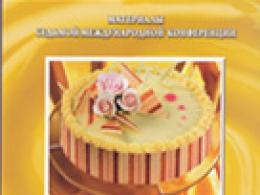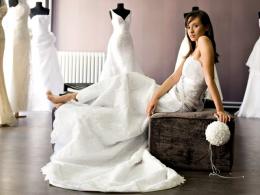No curtsies. The meaning of the word curtsy. Examples of the use of the word curtsy in the literature
Time is changing, and the style and form of communication between men and women is being transformed. In this article we will talk about such a term as "curtsy". What it is, when you need to apply this body movement and how to do everything right - I want to talk about all this.
About the concept
First of all, you need to understand the concepts that directly relate to this article. So curtsey - what is it? Everyone, probably, has seen films where they still show the tsarist time and the most beautiful noble balls. So, in order to say hello to a man, women did a small smooth squat - such a gesture of greeting. As for the dictionary designation, a curtsy is a bow with a squat, when a woman smoothly moves from one foot to the foot from “demi pli” to the 4th position. As for history, this is the most important element of court etiquette, which was preserved for three centuries - from the 16th to the 19th. Now, most often it is a dance element, greeting a guy and a girl before joining the dance.
Nuances
Having figured out, curtsey - what it is, it is worth mentioning that at the same time the girl had to be quite skillful with a long dress. And the position of the head is also important. If this body movement was used in a dance, the head practically did not bend. If it was a noble greeting, the head bent as low as possible. The degree of her inclination showed the level of respect that a woman has for this man.

A simple curtsy
Having understood the meaning of the word "curtsey", it is worth saying that even a modern girl should be able to do it. After all, who knows, maybe someone will someday manage to get an appointment with the Queen of England? And they still practice this form of greeting. So, it is best to start training with a simple curtsy, which is not so difficult to perform. To do this, you need to do a few fairly simple manipulations.
- Head. You need to tilt it a little, first make a nod and hold it in this position during the entire curtsey.
- Skirt. If it is lush, you need to carefully take it with your thumb and forefinger (while the little finger is elegantly set aside), lift it a little and take it to the side. If the skirt is narrow, the arms are simply lowered to the will of the body.
- Legs. The right leg is slightly extended and wound up behind the left, most of the weight should go to the front leg.
- Lap. Next, the legs need to be bent at the knees, making a small squat. At the same time, the knees do not look forward, but to the sides, the back is always straight.
- After all, you need to gracefully return to a normal position. At the same time, the girl’s body should not sway, her hands fall along the body, her head proudly rises.

deep curtsy
At the same time, it is also not bad if the girl knows how to make a royal, that is, a deep curtsy. You can also learn this.
- The royal curtsey involves a full squat on one knee. To do this, the right leg must be extended behind the left, leaning on the sides, the back is straight, the head is tilted as much as possible.
- You need to go down until the knee touches the floor. In this position, you need to stay for about 3-5 seconds, after which you can begin to rise.
- All movements should be smooth, without swaying. Also in this version, you need to be able to skillfully handle the dress.
ballet curtsy
I would like to talk about such a thing as a ballet curtsy. a kind of bow of a girl in front of a guy before they enter the dance. Also, a ballet curtsy can be used at the beginning and end of the performance, as a thank you to the musical accompaniment, teacher, etc. The algorithm of actions in this case will be as follows:

- Starting position - the first.
- Next, with your right foot, you need to take a small step to the right, while the toe should look exclusively to the side.
- The next moment: the weight must be transferred to the right leg, which at the same time is slightly behind the left.
- Now the weight is transferred to the tips of the toes of the left foot.
- The back is straight, the legs are bent, the knees look exclusively to the sides (and not forward), the hands are in the first position, the head is slightly lowered.
- The position of the legs remains the same, but the arms smoothly move into the fourth position. The head also rises smoothly.
- To complete the bow, the same body movements are repeated in the opposite direction.
conclusions
So, the designation of the concept of “curtsey” is already extremely clear: what it is and how to do it correctly. It is worth mentioning that there are still types of these body movements, for example, curtsey with a lunge or “Texas curtsey”, which is relevant for debutantes at a Texas ball. And there are many such nuances, but it is necessary to study them separately.
In which the woman bends her legs, pulling her knees to the sides and pushing one leg back a little, while tilting her head. She can also hold her skirt with her hands. It is the female equivalent of the male bow in Western culture.
Over time, the curtsy was replaced knixen: the woman slightly bends her knees and makes a slight nod. The curtsy squat is not as deep as the curtsy squat and is done quickly.
This type of greeting is usually used in relation to a person who has a higher social status. In European culture, it is traditional for women to curtsey or curtsey to members of the royal family.
According to Victorian dance etiquette, a woman always curtsied before starting to dance.
Nowadays knixen is practically not used. But still, female domestic servants often greet the employer with curtsy.
Female dancers often curtsy at the end of their performance to show gratitude and/or acknowledge the audience's applause. Quite often, two curtsies are performed in a row in different directions. At the end of a ballet class, traditionally, the students also curtsy or curtsy to the teacher and the pianist as a token of gratitude for the lesson they have taught.
Wikimedia Foundation. 2010 .
Synonyms:See what "Curts" is in other dictionaries:
- (fr., from lat. reverentia reverence). A respectful lady's bow, with a step back and a squat; the same as knixen. Dictionary of foreign words included in the Russian language. Chudinov A.N., 1910. REVERANCE [fr. reverence] respectful feminine… Dictionary of foreign words of the Russian language
curtsy- a, m. reverence f. A respectful bow with a squat, adopted in bourgeois noble life as a sign of greeting, gratitude, etc. BAS 1. A bow, a respectful squat Dal. [Vaneziy:] Let's start dancing, because the saddle and the stable are us ... ... Historical Dictionary of Gallicisms of the Russian Language
Cm … Synonym dictionary
curtsy, curtsey, husband. (French révérence, lit. reverence). In noble and bourgeois life, a respectful bow with a squat. "Fanagoria Petrovna stepped into the middle of the living room and made a most charming curtsy." Grigorovich. || transfer… … Explanatory Dictionary of Ushakov
REVERANCE, a, husband. 1. Respectful bow with a squat. 2. trans., usually pl. Display of respect, subservience (iron.). Curtsy to someone. address (bow in 2 digits). Explanatory dictionary of Ozhegov. S.I. Ozhegov, N.Yu. Shvedova… … Explanatory dictionary of Ozhegov
Husband, French bow, respectful curtsy. Dahl's Explanatory Dictionary. IN AND. Dal. 1863 1866 ... Dahl's Explanatory Dictionary
curtsy- a, m. 1) Respectful female bow: squatting on one leg resting on the fingertips of the other, placed behind. Deep curtsy. Squat down in curtsey in front of someone. [Charlotte] quickly picks up the lowered blanket; Anya is standing behind the blanket; she is… … Popular dictionary of the Russian language
curtsy- deep curtsy... Dictionary of Russian Idioms
curtsy- Curtsy, a, m, usually pl: curtsy, ov. Peren. Iron. An act that expresses excessive respect and obsequiousness. Makhov's speech was perceived as a curtsy to the unrevered hero of the day ... Explanatory dictionary of Russian nouns
Genus. n. a ceremonial bow (XVIII century, Melnikov 2, 134). From the French reverence from reverer read ... Etymological Dictionary of the Russian Language by Max Fasmer
Books
- Curtsy from the Other World, Khutlubyan Khachik Mnatsakanovich. At the disposal of the young journalist Andrey Primerov, there was dirt on the deputy commander of the military district, Lieutenant General Poroshin. Publication of accusatory article in the newspaper "Our…
The female equivalent of the male bow in Western culture. When performing a curtsey, the woman takes one leg back, touching the floor with the tip of her toe and, bending her knees, performs a half-squat, at the same time she tilts her head, her gaze goes down. The skirt is usually held lightly with the hands. The dance curtsy is performed in conjunction with steps and with the foot forward on the toe.
This type of greeting is usually used in relation to a person who has a higher social status. In European culture, women have traditionally curtsied to aristocrats or members of the royal family. Also, according to dance etiquette, a woman always curtsied before the start of the dance in response to the bow of the gentleman.
On stage, dancers curtsy at the end of their performance to show gratitude and/or acknowledge the audience's applause, often with multiple curtsies in succession in different directions. Also, at the beginning and at the end of classes in the ballet class, the students traditionally curtsy to the teacher and the pianist.
In everyday life, over time, the curtsy was supplanted by the curtsy: the woman slightly bends her knees and makes a slight nod. The curtsy squat is not as deep and, unlike the flowing curtsy, is done quickly. Knicksen was greeted by a student teacher or female domestic servant of her employer.
In our time, neither curtsy nor curtsy are practically used in everyday life. However, the tradition still persists to curtsey to members of the royal family.
|
||||||||||||||||||||
Write a review on the article "Curts"
An excerpt characterizing the Curtsey
Prince Andrei, looking out of the barn, saw Pierre coming up to him, who stumbled on a lying pole and almost fell. It was generally unpleasant for Prince Andrei to see people from his own world, especially Pierre, who reminded him of all those difficult moments that he experienced on his last visit to Moscow.- That's how! - he said. - What fates? That's not waiting.
While he was saying this, there was more than dryness in his eyes and the expression of his whole face - there was hostility, which Pierre immediately noticed. He approached the barn in the most lively state of mind, but, seeing the expression on Prince Andrei's face, he felt embarrassed and awkward.
“I arrived ... so ... you know ... I arrived ... I’m interested,” said Pierre, who had so many times that day meaninglessly repeated this word “interesting”. “I wanted to see the fight.
– Yes, yes, but what do the Masons brothers say about the war? How to prevent it? - said Prince Andrei mockingly. - What about Moscow? What are mine? Have you finally arrived in Moscow? he asked seriously.
- We've arrived. Julie Drubetskaya told me. I went to them and did not find. They left for the suburbs.
The officers wanted to take their leave, but Prince Andrei, as if not wanting to remain eye to eye with his friend, invited them to sit and drink tea. Benches and tea were served. The officers, not without surprise, looked at the fat, huge figure of Pierre and listened to his stories about Moscow and the disposition of our troops, which he managed to travel around. Prince Andrei was silent, and his face was so unpleasant that Pierre turned more to the good-natured battalion commander Timokhin than to Bolkonsky.
“So you understood the entire disposition of the troops?” Prince Andrew interrupted him.
- Yes, that is, how? Pierre said. - As a non-military person, I can’t say that it is completely, but still I understood the general arrangement.
- Eh bien, vous etes plus avance que qui cela soit, [Well, you know more than anyone else.] - said Prince Andrei.
When performing a curtsey, the woman takes one leg back, touching the floor with the tip of her toe and, bending her knees, performs a half-squat, at the same time she tilts her head, her gaze goes down. The skirt is usually held lightly with the hands. The dance curtsy is performed in conjunction with steps and with the foot forward on the toe.
This type of greeting is usually used in relation to a person who has a higher social status. In European culture, women have traditionally curtsied to aristocrats or members of the royal family. Also, according to dance etiquette, a woman always curtsied before the start of the dance in response to the bow of the gentleman.
On stage, dancers curtsy at the end of their performance to show gratitude and/or acknowledge the audience's applause, often with multiple curtsies in succession in different directions. Also, at the beginning and at the end of classes in the ballet class, the students traditionally curtsy to the teacher and the pianist.
In everyday life, over time, the curtsy was supplanted by the curtsy: the woman slightly bends her knees and makes a slight nod. The curtsy squat is not as deep and, unlike the flowing curtsy, is done quickly. Knicksen was greeted by a student teacher or female domestic servant of her employer.
In our time, neither curtsy nor curtsy are practically used in everyday life. However, the tradition still persists to curtsey to members of the royal family.
[[C:Wikipedia:Articles without sources (country: Lua error: callParserFunction: function "#property" was not found. )]][[C:Wikipedia:Articles without sources (country: Lua error: callParserFunction: function "#property" was not found. )]]
|
||||||||||||||||||||
Write a review on the article "Curts"
An excerpt characterizing the Curtsey
- My house, like everything that is inside it, Your Holiness, after the death of my beloved husband, Girolamo, belongs to my daughter Anna, while she is alive! I exclaimed indignantly. – Or does the “holy” church no longer consider her a tenant in this world?!Everything was boiling inside me, although I perfectly understood that, being angry, I only complicated my already hopeless situation. But the arrogance and arrogance of Caraffa, I'm sure, could not leave a single normal person calm! Even when it was only about desecrated memories dear to his heart...
- As long as Anna is alive, she will be here, Madonna, and serve our beloved holy church! Well, if she, unfortunately, changes her mind, she, one way or another, will no longer need your wonderful home! - Caraffa hissed furiously. – Do not overdo it in your zeal to find justice, Isidora! It can only harm you. My long-suffering also has limits... And I sincerely advise you not to cross them!..
Turning sharply, he disappeared behind the door, without even saying goodbye and not informing me how long I could stay alone in my so unexpectedly resurrected past ...
Time stopped... ruthlessly throwing me, with the help of Caraffa's sick fantasy, into my happy, cloudless days, not at all worrying that my heart could simply stop from such an unexpected "reality"...
I sadly sank into a chair by the familiar mirror, in which the beloved faces of my relatives were so often reflected ... And in which now, surrounded by dear ghosts, I sat all alone ... Memories choked with the power of their beauty and deeply executed with bitter sadness our departed happiness...
Once upon a time (now it seemed a very long time ago!) At the same huge mirror, every morning I combed the wonderful, silky hair of my little Anna, jokingly giving her the first children's lessons of the "witch" school ... Girolamo's eyes burning with love were reflected in the same mirror , affectionately hugging my shoulders ... This mirror reflected in itself thousands of carefully preserved, wondrous moments that now stirred up my wounded, tormented soul to the very depths.
The multimedia historical park "Russia - My History" in Yekaterinburg is one year old. During this time, it was visited by over 100 thousand people, and the vast majority are children and youth. In an interview with Oblgazeta, the director of the park, candidate of historical sciences she said that the entrance to the park for school groups is free, any children's team in the region can get acquainted with the expositions for free, and the teacher can conduct a lesson.
- 60 thousand out of a hundred thousand visitors to the park in the Ural capital are schoolchildren and students. Is this your target audience?
These are exactly those for whom we created our expositions. The multimedia park is a living history textbook, as the director of the Hermitage rightly noted Mikhail Piotrovsky . The park provides a unique opportunity to see the diversity of life of the peoples of Russia from ancient times to the present day. All stages and all aspects of the life of our country for the thousand-year history of its existence are presented here. Education and science, culture and art, public life, economy, rulers, scientists and public figures - everything that a visitor wants to know about our country is here. This is an "encyclopedia" that, on demand, provides the necessary information from the field of national history. Moreover, this knowledge is presented with the help of modern multimedia technologies, the method of presentation is understandable and close to children. Arriving at the park, they are immersed and feel like they are in the flow of Russian history. When we discover history, we discover ourselves. Who are we in this world?

Natalia Proshina has been in charge of the multimedia museum in Yekaterinburg since its opening. Photo: Alexey Kunilov
Dossier "Oblgazeta"
Natalia PROSHINA was born February 24, 1960. In 1983 she graduated from the historical faculty of the Orenburg Pedagogical Institute. She worked at school and university. In 1993, after graduating from Ural State University (now Ural Federal University), she defended her Ph.D. thesis in history. She worked at the State Archives of the Sverdlovsk Region.
– Are so many schoolchildren interested in this subject today?
But this is our task - to immerse and make children fall in love with the history of their native country. If we do not do this, then - a holy place is never empty - others will do it for us, and the result may be different. And it is not a fact that we - parents, teachers - will be satisfied in this case. Every year, tens of thousands of people leave our country to live abroad - why is this happening? I am convinced that one of the reasons is the wrong attitude to the historical and cultural heritage. And this is a direct consequence of ignorance of one's own history, the fact that it was persistently misrepresented and falsified. Including in recent years, when an exclusively liberal paradigm prevailed.
- Do you look at the history of Russia as a means of educating patriotism?
History is a very delicate matter. Of course, without knowing the true history, the heroes of the Fatherland, we will not be able to form patriotism in children in its deepest sense - love for the Motherland, civic responsibility. When in our country for a long time there was no scientific state concept of historical school education, we got what we have now: our children do not know the history of the country, and without the past it is impossible to understand the present and determine the goals of the future. But should Russians be ashamed of their history? When a few years ago the patriarchal department for culture presented its exhibition "The Romanovs" in Moscow, this served as an impetus for the creation of a state historical and cultural standard, which is the basis of school history education. Of course, it needs to be improved, and it will be improved. History cannot be treated roughly, otherwise it takes revenge, and very cruelly. The state must form its historical policy, it has a legal right to do so. History should not divide us, but rather unite us. But the main thing - the beginning of the state approach to the school teaching of history - is necessary.

It will take 5,570 minutes to get acquainted with all the expositions of the Russia - My History park in Yekaterinburg. Photo: Alexey Kunilov
– What are the reasons why history should be taught the same way all over the country?
It's not about teaching the same thing. Teachers can teach in different ways. But what matters is the material and its objective presentation. And the message for studying the history of the Fatherland needs a different one than we have seen in recent decades: just enough to criticize and repent. There are ups and downs in our history. We have an amazing centuries-old history to be proud of.
– Do you think that it is possible to do without criticism of historical achievements?
Why, today there is criticism of our park by representatives of the Free Historical Society, and this is great - we, the "statists", have something to answer. Historians will criticize each other and enter into polemics with each other, and this is normal. This is how science develops. And students should be aware of this controversy. It is necessary to provide children with the opportunity to receive historical knowledge about the Fatherland from reliable sources and proven facts. You need to know about the campaign from the Varangians to the Greeks, the Baptism of Russia, the Battle of Kulikovo and the Battle of Borodino, what Russian soldiers fought in battles for and how our state was created. Russian children cannot have any other “reading” of history in which they would believe that our ancestors died in vain in these battles or that they could not kill their enemies, showing tolerance ...

In our park, history is interpreted objectively - the content was developed by academic science: the Institute of History of the Russian Academy of Sciences, the Faculty of History of Moscow State University. Regional content was handled by the Ural Federal University, scientists who know and love the Urals. In addition, in order to create a Ural regional component in the park, the Ministry of Culture of the Sverdlovsk Region mobilized all the best museums and archives of the region. The authors of the park materials are free from a simplified understanding of history.
The developers of the content of the exposition tried as truthfully as possible, taking into account the achievements of modern historical science, to show the history of the Russian state. We do not adapt to anyone, but simply show the history that we had. Without falsifications, without curtsies and equivocations, which everyone is already tired of. And it is right. This is our story. Even foreigners notice it. We had a boxer Michael Tyson , after the tour, he said: “I am interested in history and very often think about those times when Russia was attacked from all sides. But thanks Ivan the Terrible all the invaders were simply kicked out of the territory of Russia.” So why don't Russian schoolchildren know this?

Modern expositions of the park are interesting for both adults and children. The picture in the museum shows Pavel Krekov, Deputy Governor of the Sverdlovsk Region. Photo: Alexey Kunilov
What would you recommend to start your first acquaintance with the park?
Sightseeing tours are very interesting. Multimedia and interactive technologies are used: touch tables, light boxes, projectors, tablets, video infographics, animation, 3D modeling, digital reconstructions... We often host theatrical historical reconstructions - we cooperate with specialized military history clubs. At the same time, admission to all events in the park is free. And thematic excursions with the involvement of our employees cost ridiculously little, like a one-way trip by public transport. We are open to everyone, and more than 100,000 visitors per year is not the limit for the park.
What interesting things are you planning for the next year?
Already on September 21, on the Day of Military Glory, we will hold a presentation of the ancient Russian sword from the Kulikovo field. He was presented to the park on his birthday by the Russian Academic Foundation, which is headed by Roman Igorevich Putin . In addition, we will demonstrate the historical reconstruction of the duel between the Russian hero and the Mongol warrior. We will try to explain clearly why different armies of Russian cities went to the Kulikovo field, and a single nation returned from it. In 2019, we plan to hold a big festival of home family theater. We start with him in the winter, and the final is scheduled for August next year.
By the way
Museum "Russia - My History" is visited free of charge: large families, veterans, disabled people, pensioners, groups of schoolchildren. For the rest, the ticket price is from 50 to 200 rubles.

More than 1,000 units of multimedia equipment are used in the museum premises. so that each exposition is unique and attracts attention. Photo: Pavel Vorozhtsov
- Published in No. 165 dated 09/12/2018 under the heading "Russia in 5,570 minutes"






